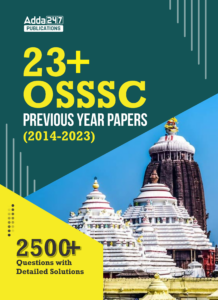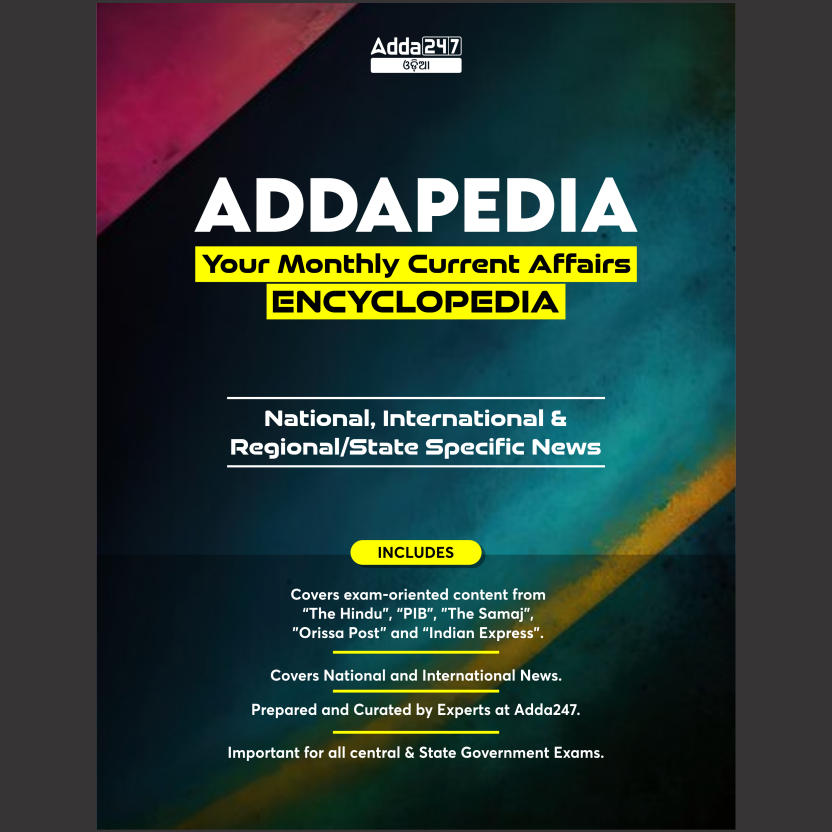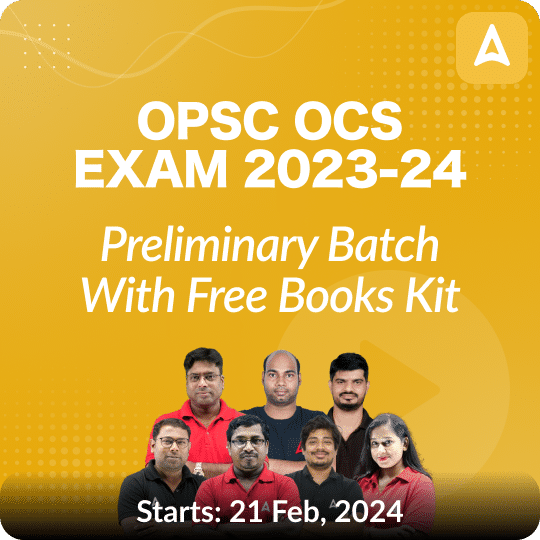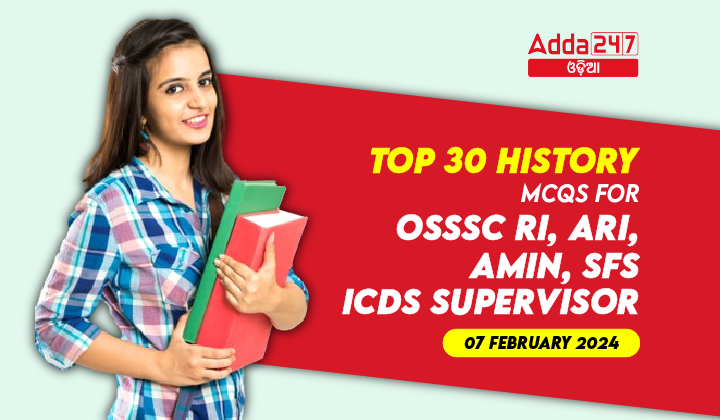History is a significant component of various competitive examinations, including those conducted by the Odisha Subordinate Staff Selection Commission (OSSSC) for the posts of Revenue Inspector (RI), Assistant Revenue Inspector (ARI), Amin, Statistical Field Surveyor (SFS), and Integrated Child Development Services (ICDS) Supervisor. To assist aspirants in their preparation, we’ve compiled a list of the top 30 multiple-choice questions (MCQs) covering crucial historical events, personalities, and concepts.
Top 30 History MCQs For OSSSC RI, ARI, Amin, SFS, ICDS Supervisor Exams
- Who was the Governor-General of Bengal during the years 1772-1785?
a) Lord Cornwallis
b) Sir John Shore
c) Warren Hastings
d) Lord Wellesley
Answer: c) Warren Hastings - Which act was passed in 1773, regulating the administration of British territories in India?
a) Regulating Act of 1773
b) Pitt’s India Act of 1784
c) Charter Act of 1793
d) Charter Act of 1813
Answer: a) Regulating Act of 1773 - Which city was home to the Supreme Court established in India during this period?
a) Delhi
b) Mumbai
c) Calcutta
d) Madras
Answer: c) Calcutta - Who founded the Asiatic Society of Bengal?
a) Warren Hastings
b) Lord Cornwallis
c) Sir John Shore
d) Lord Wellesley
Answer: a) Warren Hastings - The first Anglo-Maratha War took place during the tenure of which Governor-General?
a) Warren Hastings
b) Lord Cornwallis
c) Sir John Shore
d) Lord Wellesley
Answer: a) Warren Hastings - Which act was introduced in 1784, reforming the administration of British India?
a) Regulating Act of 1773
b) Pitt’s India Act of 1784
c) Charter Act of 1793
d) Charter Act of 1813
Answer: b) Pitt’s India Act of 1784 - The establishment of Appellate courts and lower grade courts occurred during the tenure of which Governor-General?
a) Warren Hastings
b) Lord Cornwallis
c) Sir John Shore
d) Lord Wellesley
Answer: b) Lord Cornwallis - Who introduced the Permanent Settlement and civil services in British India?
a) Warren Hastings
b) Lord Cornwallis
c) Sir John Shore
d) Lord Wellesley
Answer: b) Lord Cornwallis - The Third Anglo-Mysore War and the Treaty of Seringapatam occurred during the tenure of which Governor-General?
a) Sir John Shore
b) Lord Wellesley
c) Lord Hastings
d) Lord Cornwallis
Answer: b) Lord Wellesley - Which system was introduced by Lord Wellesley to establish British influence in Indian states?
a) Subsidiary Alliance System
b) Permanent Settlement
c) Ryotwari System
d) Mahalwari System
Answer: a) Subsidiary Alliance System
- Which Governor-General concluded the Treaty of Bassein with the Marathas?
a) Lord Cornwallis
b) Sir John Shore
c) Lord Wellesley
d) Lord Minto I
Answer: c) Lord Wellesley - The establishment of Fort William College at Calcutta occurred during the tenure of which Governor-General?
a) Lord Hastings
b) Lord Wellesley
c) Sir John Shore
d) Lord Cornwallis
Answer: b) Lord Wellesley - Who was the Acting Governor-General of India until the arrival of Lord Minto I?
a) Sir John Shore
b) Sir George Barlow
c) Lord Cornwallis
d) Lord Hastings
Answer: b) Sir George Barlow - Which event led to the diminishment of British territory under Sir George Barlow’s administration?
a) Third Anglo-Maratha War
b) Treaty of Seringapatam
c) Mutiny of Vellore
d) Treaty of Amritsar
Answer: c) Mutiny of Vellore - The Treaty of Amritsar was concluded with which ruler by Lord Minto I?
a) Tipu Sultan
b) Maharaja Ranjit Singh
c) Nizam of Hyderabad
d) Maratha Peshwa
Answer: b) Maharaja Ranjit Singh - Who abolished the policy of Non-intervention during their tenure as Governor-General?
a) Lord Cornwallis
b) Sir John Shore
c) Lord Hastings
d) Lord Wellesley
Answer: c) Lord Hastings - Which system was established in Madras by Thomas Munroe during Lord Hastings’ tenure?
a) Permanent Settlement
b) Ryotwari System
c) Mahalwari System
d) Subsidiary Alliance System
Answer: b) Ryotwari System - The mutiny of Barrackpore in 1824 occurred during the administration of which Governor-General?
a) Lord Hastings
b) Lord Amherst
c) Lord Wellesley
d) Lord Minto I
Answer: b) Lord Amherst - Who introduced the Subsidiary Alliance System in India?
a) Lord Cornwallis
b) Warren Hastings
c) Lord Wellesley
d) Lord Dalhousie
Answer: c) Lord Wellesley - The third Anglo-Maratha war and the abolition of Peshwaship took place during the tenure of which Governor-General?
a) Lord Hastings
b) Lord Amherst
c) Lord Wellesley
d) Lord Minto I
Answer: a) Lord Hastings
- Who was the first official Governor-General of British India?
a) Warren Hastings
b) Lord William Bentinck
c) Lord Mountbatten
d) Chakravarti Rajagopalachari
Answer: b) Lord William Bentinck - Who served as the first Viceroy of India?
a) Lord Canning
b) Lord Mountbatten
c) Lord William Bentinck
d) Warren Hastings
Answer: a) Lord Canning - Who was the Governor-General of India during the Revolt of 1857?
a) Lord Dalhousie
b) Lord Canning
c) Lord Curzon
d) Lord Ripon
Answer: b) Lord Canning - Who was appointed as the first female Governor of India?
a) Sarojini Naidu
b) Indira Gandhi
c) Mother Teresa
d) Chakravarti Rajagopalachari
Answer: a) Sarojini Naidu - Who served as the first Governor-General of independent India?
a) Lord Mountbatten
b) Lord Canning
c) Chakravarti Rajagopalachari
d) Sarojini Naidu
Answer: a) Lord Mountbatten - Who succeeded Lord Mountbatten as the Governor-General of India?
a) Lord Canning
b) Warren Hastings
c) Chakravarti Rajagopalachari
d) Sarojini Naidu
Answer: c) Chakravarti Rajagopalachari - The Doctrine of Lapse policy was introduced by which British Governor-General?
a) Lord Dalhousie
b) Lord Bentinck
c) Lord Wellesley
d) Lord Cornwallis
Answer: a) Lord Dalhousie - Who is considered to have been the first and last Indian to hold the post of Governor-General of India?
a) Lord Canning
b) Lord Mountbatten
c) Chakravarti Rajagopalachari
d) Sarojini Naidu
Answer: c) Chakravarti Rajagopalachari - After 1950, what replaced the post of Governor-General of India?
a) Prime Minister
b) President
c) Chief Minister
d) Viceroy
Answer: b) President - What year did Lord Mountbatten serve as the last Viceroy of the British Indian Empire and the first Governor-General of independent India?
a) 1945-1947
b) 1947-1948
c) 1948-1950
d) 1950-1952
Answer: b) 1947-1948









